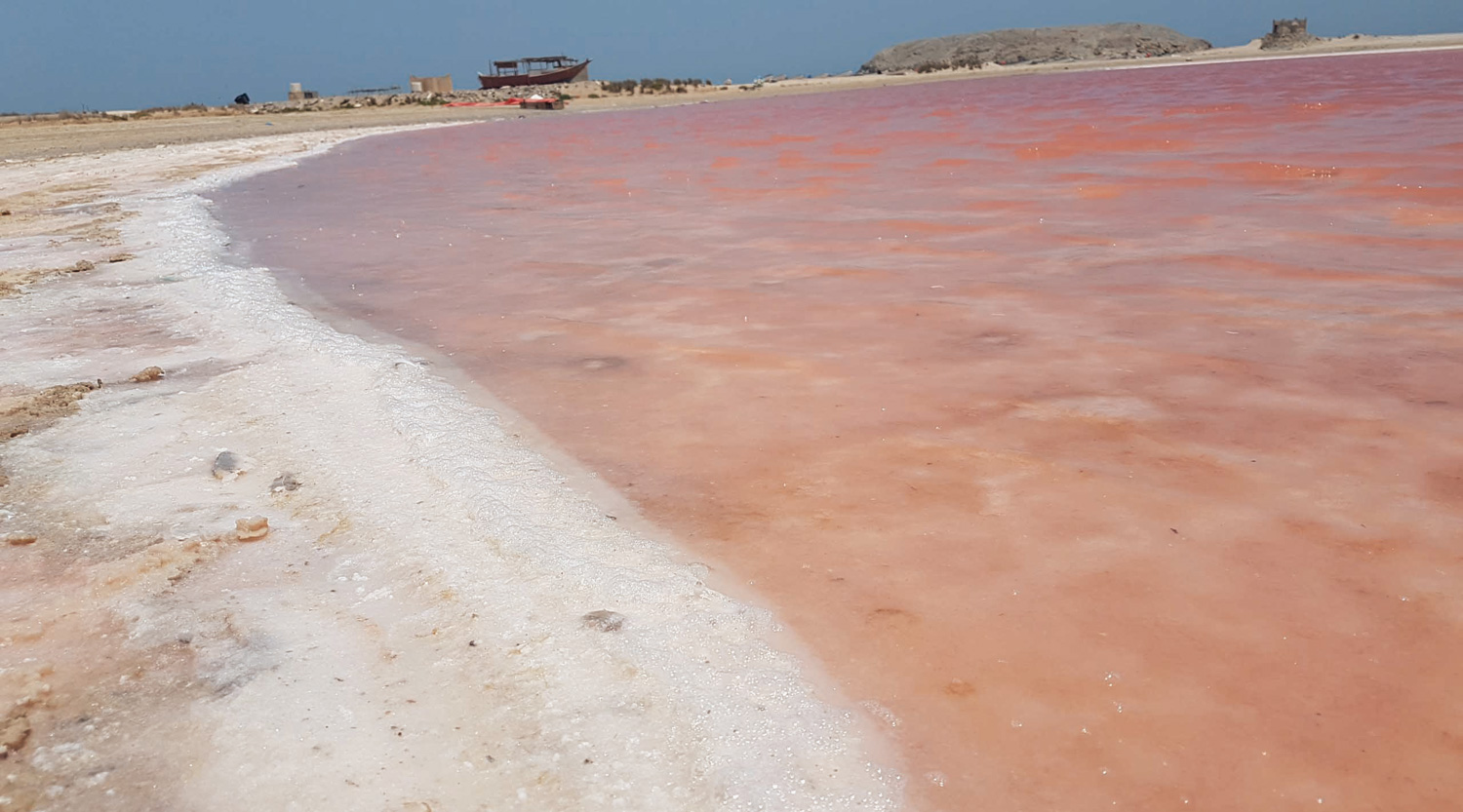

What lies below wasn’t sand. That was perhaps everyone’s mistake. You’d know it right away the first time you step on its shallow water. Instead of that soft, caressing embrace we are all familiar with, it’s the pinching agony caused by hardened salt crystals that welcomes you. It’s at the very first barefoot step and that first ‘ouch’ that you’d realise, this is not an ordinary place.
From afar, it looked like a forgotten body of water — too insignificant that not even one barasti or hut made of palm frond was erected nearby. On most days, it is left on its own, visited every so often by different birds, some of them clueless that its water has high level of salinity. For those who make the mistake of drinking from its sun-heated water, eventually, end up fully dehydrated and sad as it may be, the pink water of the Lake of Al Suwih serves as their final resting place.
From the main road, it glistened and beaconed like a mirror misplaced in the wide expanse of the desert. Its pink water is hard to miss but it is only upon getting close that you’d get full understanding of the vibrance of its colour.
Located in the wilayat of Jalan Bani Bu Ali, the Pink Lake of the Al Suwih village is about three hours’ drive from Muscat. It is separated from the nearby sea by the main road that connects Ras al Hadd and Al Ashkarah.
Becoming popular

Oman Outdoor Adventure led by Ahmed al Jaabri has noted that the Pink Lake of al Suwih is slowly gaining a reputation as a must-visit when in Oman. The fact that the colour of the water is totally different from those seen in the rest of the country is one of the primary reasons it is getting traction.
“Ras al Jins and Ras al Hadd are very popular camping and tourist grounds. The first, being the nesting ground for sea turtles, and the other, with its long stretch of beach is perfect for outdoor lovers. The Pink Lake, being in the area, is something we’ve always wanted to check out,” he said.
“We drove ahead and prepare our place in Ras al Hadd while the rest of the team followed the morning after. Other than the Pink Lake, I was also excited to take the group on a detour as I think they definitely need to see the scenic cliffs of Al Khabah,” he shared.
Hamida al Habsi, whose second time to come with the group, has noted how beautiful this often overlooked part of the Sultanate is. She cannot count the number of photos and selfies she took just because the cliff view was without a doubt remarkable.
Yevgeniya Chmutova drove all the way from Dubai to join the team in exploring the pink lake.
“Oman truly has amazing places to discover. Seeing the Pink Lake, I couldn’t believe how intense its colour is,” she shared.
Khezia Resma said that when she heard about the trip going to the Pink Lake, she knew it is something she cannot afford to miss.
“I have a list of places that I wanted to visit in Oman. Call it a bucket list of some sort. As an expat, we’re lucky that there are different adventures one can embark on and the Pink Lake is something that’s in the top 10 that I’ve got to see,” she shared.
“Seeing it up close, there were a lot of things to discover. I am amazed by the tone of its colour. It was also interesting to see that beneath the water, these are all salt crystals that have hardened and one wonders how long it took for it to gain its colour. Definitely worth it to come,” she said.
The science behind the colour

Calling herself Go Go Dee Beau on social media and a member of the Oman Tourism And Guides Facebook group, Dee joined Oman Outdoor Adventure to check out what the mystery of the pink lake was all about.
Reading through different posts, Dee discovered, according to the research made by students from the Sultan Qaboos University, that the colour change was caused by a type of micro-algae called Dunalilla Salina.
This type of algae thrives in highly saline conditions and the pink colour was due to the high concentration of B-carotene which they used to protect themselves from intense sunlight.
Local environmentalists reported that sometimes, when the water overflow from the ocean and ends up piling in the lake, the salinity of the lake water goes down which results to it losing its pink colour. This is a phenomenon that happen quite often but they reported that the lake will always regain its colour especially after a few days and the salinity gets highly concentrated again.
“It’s exciting to see the interest around Oman’s different geographical features and bodies of water. From Nasa doing tests on its desert to The New York Times recently publishing the potential of its stones to help clean up the air to the pink lake that on its own is truly making it alien, I can’t wait to discover more and see all of these features,” Resma shared.
YERU EBUEN
Oman Observer is now on the WhatsApp channel. Click here



